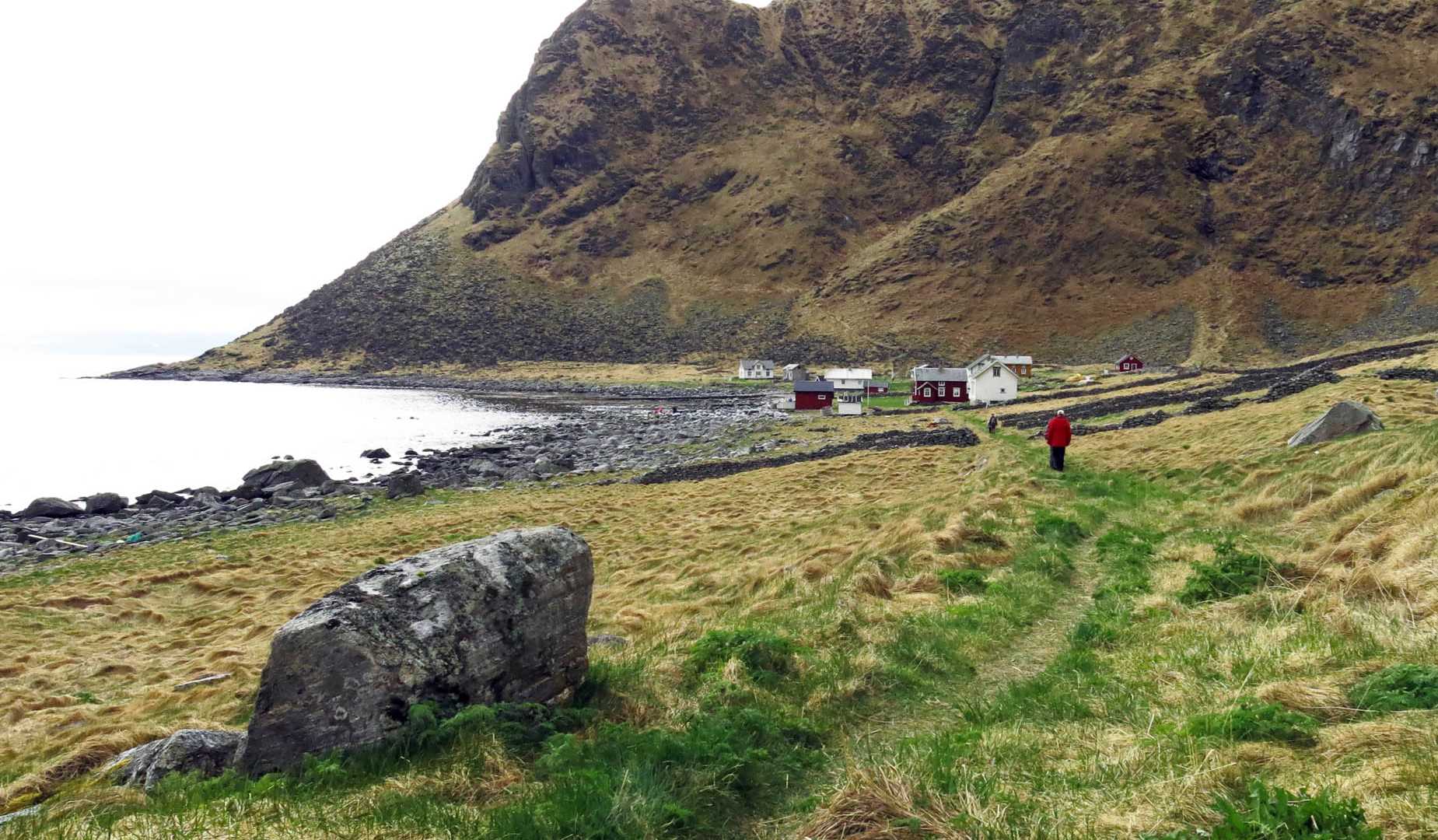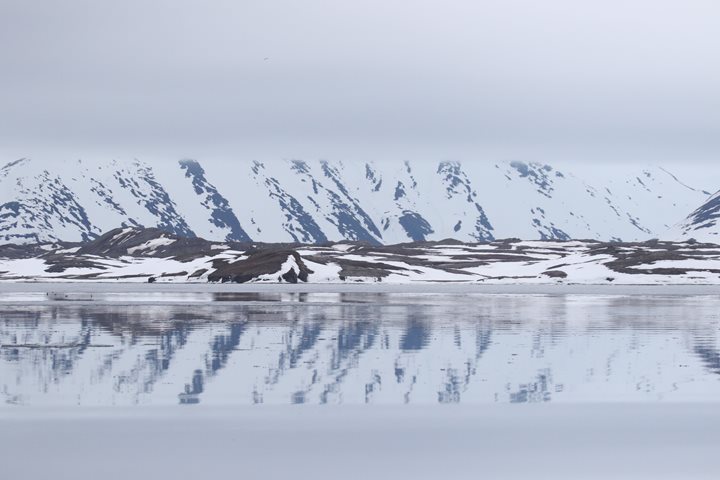We woke up just as National Geographic Explorer anchored off Måstad on the south side of Værøy. This is one of the largest islands in outer Lofoten. Måstad is a small abandoned fishing village. The inhabitants of this village used to make a living from fishing, small-scale farming and harvesting sea birds and eggs as part of their food supply. The puffins were caught with the help of a special breed of dog called the Norwegian Lundehund, which translates to puffin dog.
Some of the old cultural landscape near the village is now protected, and so are the puffins and most of the other seabird species. Most of our guests chose to go hiking along an old wagon trail that lead into a protected area. The hike was followed by a Zodiac cruise along cliffs where we saw nesting kittiwakes, razorbills, and other seabirds. After lunch we dropped anchor and visited Reine, one of the many fishing ports and villages along the coastline of the Lofoten Islands. Reine is framed by spectacular scenery and has a combination of old and new buildings. Until the end of the 19th century many cabins were specially constructed for the fishermen arriving at the village with their row boats. These characteristic red huts were called rorbu cabins.
After such a memorable day in the Lofoten Islands, it is easy to understand why this area has been rated as one of the most scenic destinations of the world.







